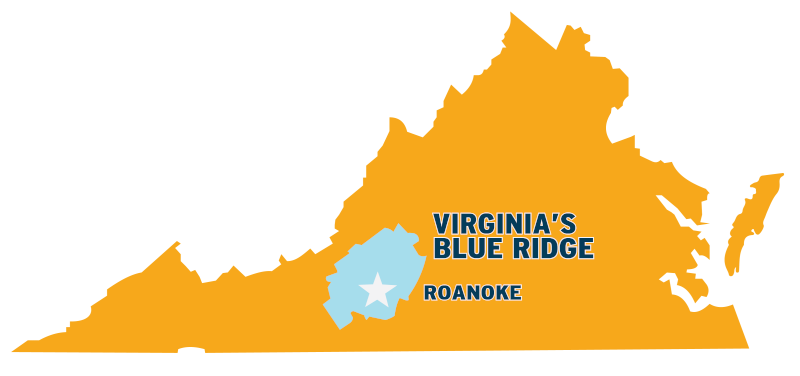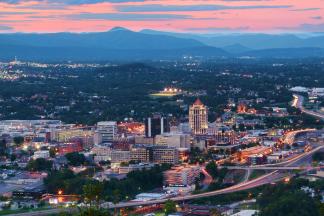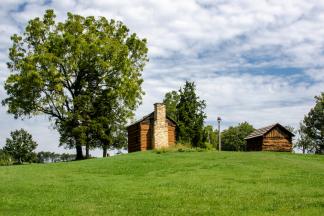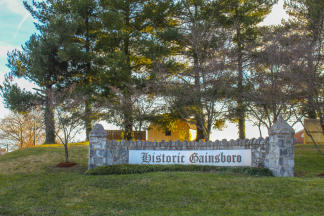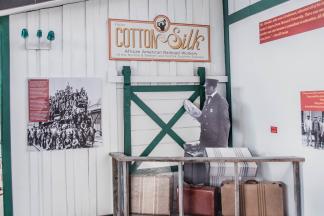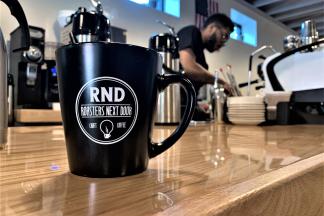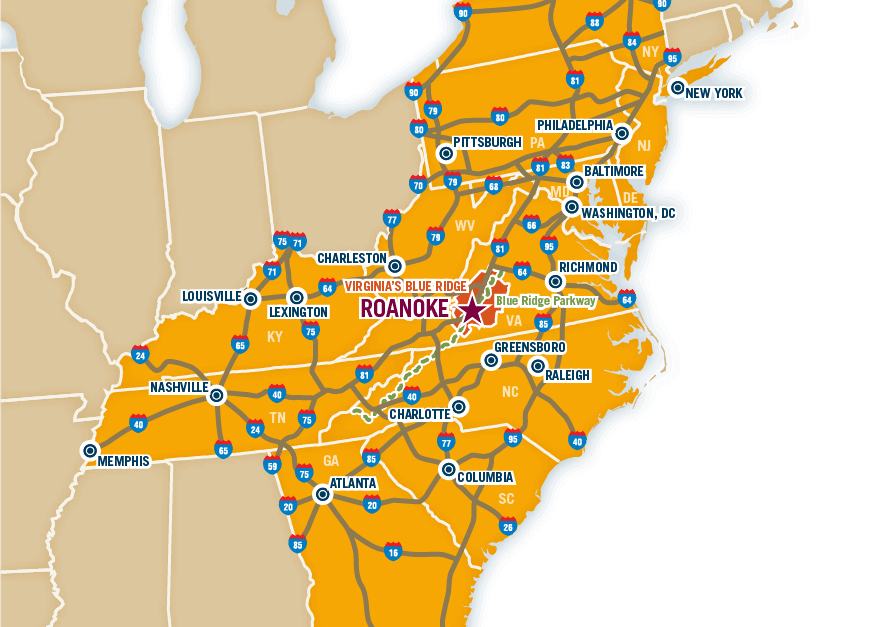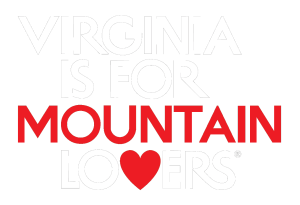A guide to Black history with relevant experiences, stories, and places of interest around the region.
-
Things To Do
- Arts & Culture
- Attractions
- Beer, Wine & Spirits
- Blue Ridge Parkway
- Events
- Free Things To Do
- History & Heritage
- Kid Friendly
- Nightlife
-
Outdoor Adventure
- Leave No Trace
- Appalachian Trail
- Biking
- Climbing
- Disc Golf
- Fall Color Spots
- Fishing
- Geocaching
- George Washington & Jefferson National Forests
- Greenways
- Hiking Trails
- Horseback Riding
- Kayaking & Paddling
- Kid Friendly Outdoors
- Motorcycle Touring
- Outdoor Outfitters & Shops
- Scenic Drives
- Water Sports
- Wildlife Viewing & Birding
- Classes & Workshops
- Sample Itinerary
- Sample Itineraries
- Shopping
- Spas
- Sports
- Tours
- VBR Savings Pass
- Hotels/Lodging
- Restaurants
- Region
- Plan
Notable Figures of Black History in Virginia's Blue Ridge
Notable Figures of Black History in Roanoke, VA
There have been many iconic figures in the Black history of Virginia’s Blue Ridge, both for the impact made on our local and regional communities, as well as legacies and influence felt around the nation and entire world.
The contributions of African Americans to the history and growth of Virginia’s Blue Ridge are vast and significant, and this list of notable figures is only a sampling of individuals deserving of recognition.
- Booker T. Washington
- Virginia Y. Lee
- Oliver White Hill
- Lucy Addison
- Oscar Micheaux
- Reverend Samuel Poague
- Maxine Fitzgerald
- Norvel Lee
- Edward R. Dudley
- Don Pullen
- Henrietta Lacks
- The Harmon Family
- Noel C. Taylor
- Edward and Judith Barnett
- Dr. Beth A. Brown
- Reverend Dr. R.R. Wilkinson
- Al Holland
- Hunton Life Saving & First Aid Crew
Visit the Harrison Museum of African American Culture in Downtown Roanoke and also check out the Self-Guided Tour of Historic Gainsboro for a greater perspective and understanding of Black history in Roanoke and the surrounding region.
We hope this list will introduce you to some of the amazing examples of Black history and culture that are part of our community in the Blue Ridge Mountains.
Booker T. Washington
Before he would go on to become one of the most prominent and influential African Americans in the United States, Booker T. Washington was born into slavery on a farm in Franklin County. Today, that farm is the location of the Booker T. Washington National Monument, which spotlights Washington’s life and legacy, while also offering a glimpse of what it would have been like on a tobacco farm in the mid-1800s.
As an adult, Washington would create and lead the Tuskegee Institute in Alabama, found the National Negro Business League, and become a key voice regarding race relations and politics, including as an advisor to multiple U.S. Presidents. At one point, Washington was regarded as the most influential and powerful African American in the country.
Learn More: 5 Things You Didn’t Know About Booker T. Washington >
Return to the list at the top of the page.
Virginia Y. Lee
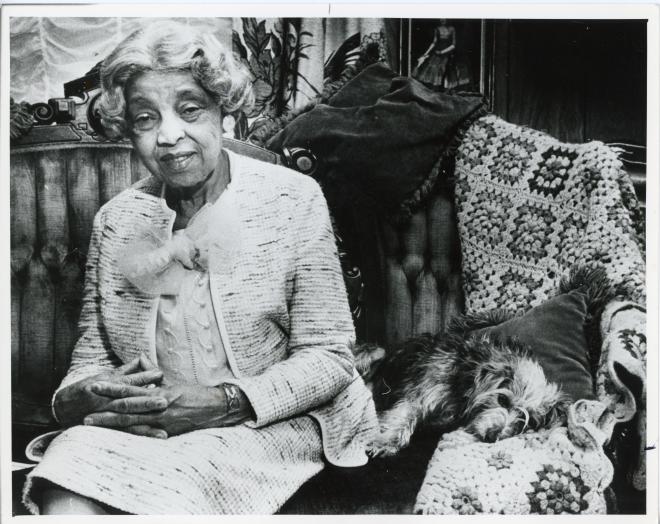
If we think of the late John Lewis’ directive to “Get in good trouble, necessary trouble,” it’d be a good way to describe the legacy of Virginia Lee. Lee was the librarian at Roanoke’s Gainsboro Library for 42 years, and her work provided the Black residents of the Gainsboro neighborhood a facility where children and adults could pursue educational opportunities.
She helped secure funds from the City of Roanoke for the Gainsboro Library after the existing library outgrew its location in the basement of a local YMCA. However, the city only provided enough funds for the construction of the new facility and not the costs to purchase the land. Lee worked with Father Thomas at nearby St. Andrews Catholic Church to write to Pope Pious XII to see if the church would lease a piece of land for the new property. Instead, the Catholic Church donated a piece of land for the new library, with the Pope’s approval, paving the way for the construction of the new facility.
Lee also created a collection of African American literary and historical pieces, despite opposition from Roanoke City Council. Though she was asked to remove the collection from the library, Lee continued to build upon the collection while hiding it in the basement. Now, the Virginia Y. Lee Collection is named in her honor at the library she helped create, which still operates today and is listed on the National Register of Historic Places.
Learn More: Gainsboro Library Photography Collection >
Photo courtesy of the Virginia Room, Roanoke Public Libraries
Return to the list at the top of the page.
Oliver White Hill
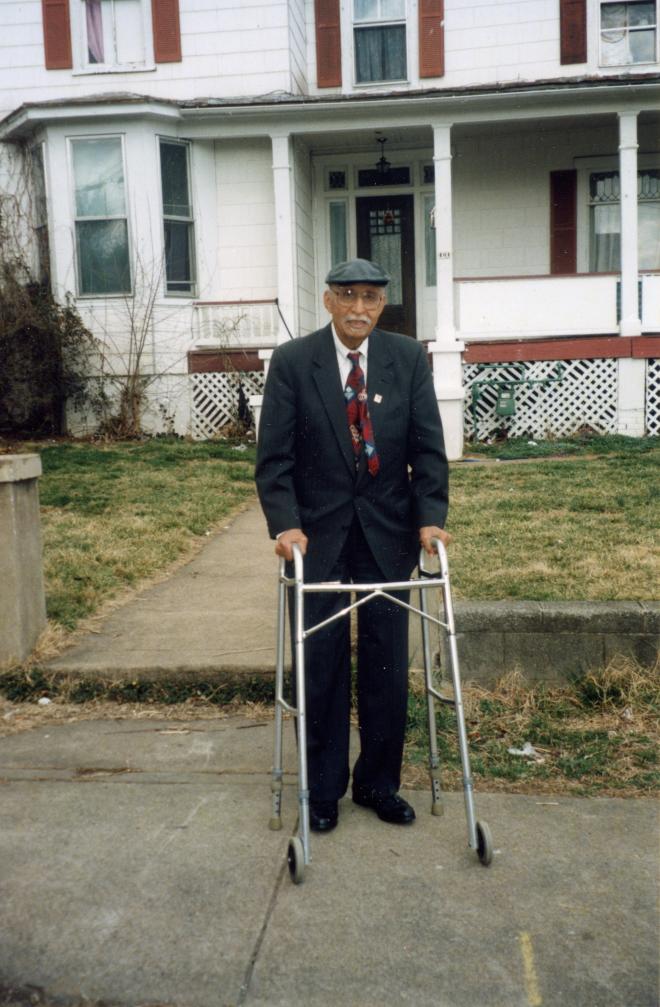
Oliver White Hill grew up in Roanoke’s Gainsboro neighborhood and describes his upbringing as part of what gave him the self-respect and regard for human dignity that would drive him to become a successful civil rights lawyer.
Hill was a tireless advocate for civil rights, particularly in his work to desegregate schools. His lawsuit against the Prince Edward County public school system would eventually become part of the monumental Brown v. Board of Education case that would strike down segregation in schools in 1954.
He would spend his life working toward the advancement of civil rights, representing the legal team of the NAACP and serving in President Kennedy’s administration. Hill was also awarded the Presidential Medal of Freedom, which is the nation’s highest civilian honor.
Learn More: The Oliver White Hill Foundation >
Photo courtesy of the Virginia Room, Roanoke Public Libraries
Return to the list at the top of the page.
Lucy Addison
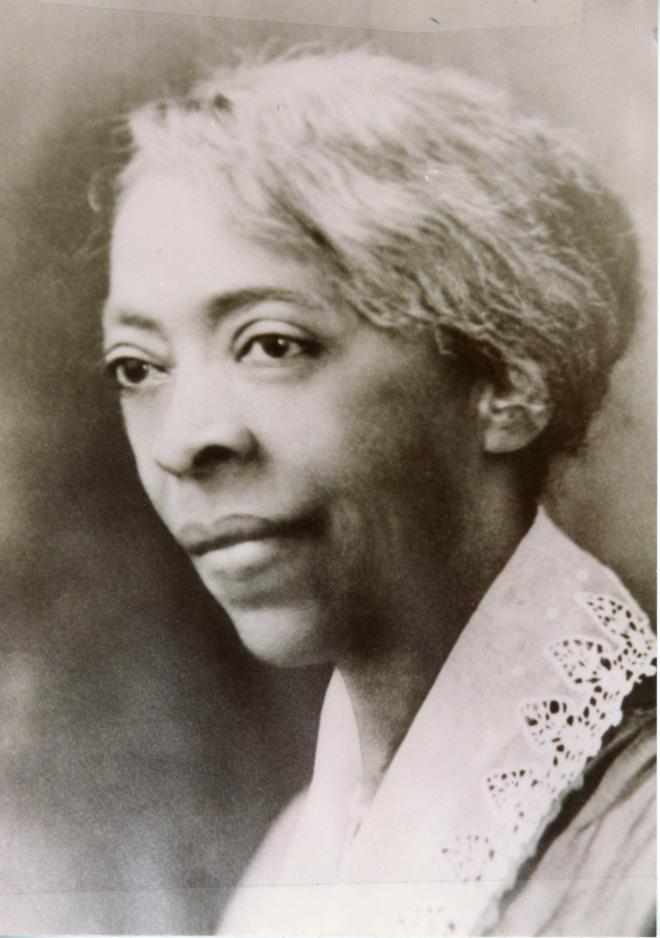
When Lucy Addison was named the principal of The Harrison School in Roanoke in 1917, the school only offered coursework through 8th grade, which meant black students who wanted to get a high school diploma had to leave the area to find a school that would provide them the opportunity. Many students had to travel to Petersburg, which is 170 miles away.
Addison’s work to incorporate high school level courses to The Harrison School helped it receive accreditation as an official secondary school from the State Board of Education in 1924, and it would go on to become the largest African American school in Virginia under the direction of a woman.
After Addison retired, the City of Roanoke would open a new high school for Black students, which was named in her honor. That school is still in operation today as the Lucy Addison Middle School, and it’s also the location of the Lucy Addison High School Monument Wall.
Learn More: Encyclopedia Virginia - Lucy Addison >
Photo courtesy of the Virginia Room, Roanoke Public Libraries
Return to the list at the top of the page.
Oscar Micheaux
Oscar Micheaux is considered one of the most successful Black filmmakers in history and a pioneer who paved the way for contemporaries like Spike Lee and Ava DuVernay.
From 1922 to 1925, Micheaux lived and worked in Roanoke’s vibrant Henry Street Business District in the Gainsboro community. He had an office for his film company at The Strand Theatre and lodging at the nearby Hampton Hotel, which would become Hotel Dumas.
Learn More: The New York Times - Oscar Micheaux, Intrepid Creator of Films on Race >
Return to the list at the top of the page.
Reverend Samuel Poague
Though they weren’t highly populated, there were numerous Black communities around Botetourt County in the mid-to-late 1800s and early 1900s. The people in these communities worked hard to create their own identity, which included schools and churches. The Reverend Samuel Poague played a key role in establishing many of those churches.
He was a Pastor at the First Baptist Church of Fincastle, the oldest African American church in Botetourt County, and he also helped found the First Baptist Church of Cloverdale and Lily of the Valley Baptist Church.
Return to the list at the top of the page.
Maxine Fitzgerald
When Maxine Fitzgerald enrolled as a student at Roanoke College in 1964, she was the first Black student to attend the college and one of the first African-Americans to enroll in a private institution in Virginia.
She was ranked first in her class and Valedictorian when she graduated from George Washington Carver High School in Salem and chose to attend Roanoke College because it was her “first choice,” despite receiving a scholarship offer to Bennett College in North Carolina and acceptance at Virginia State College, which are both parts of the network of Historically Black Colleges & Universities.
Learn More: Roanoke College - Maxine Fitzgerald: History-Maker >
Return to the list at the top of the page.
Norvel Lee
Norvel Lee won a gold medal in boxing at the 1952 Summer Olympics in Helsinki, Finland, making him the first Black Virginian in history to win a gold medal. Lee grew up in Lick Run, a small community near Eagle Rock in Botetourt County.
He also made history by being arrested for refusing to give up his seat on a train in Alleghany County in 1948. His challenge of the conviction and subsequent victory in the state supreme court helped overturn part of the policy of segregation at the time.
Learn More: Norvel - An American Hero >
Return to the list at the top of the page.
Edward R. Dudley
It’s pretty remarkable that Roanoke would have two prominent civil rights lawyers who essentially grew up on the same block, but that’s the case with Oliver Hill and Edward R. Dudley, who both lived on Gilmer Avenue in Gainsboro.
Dudley was a civil rights attorney who was recruited by Thurgood Marshall to serve as a special assistant for the NAACP.
He was eventually selected by President Harry Truman to serve as a U.S. Envoy and Minister in the African country of Liberia. When the United States created an Embassy in Liberia in 1949, Dudley was promoted to Ambassador - becoming the first Black Ambassador in the history of the United States.
Following his time as Ambassador and upon returning to his law career, Dudley would also serve as a justice on the New York Supreme Court for 20 years.
Learn More: The Legacy of Edward R. Dudley - Civil Rights Activist and First African American Ambassador >
Return to the list at the top of the page.
Don Pullen
Born in 1941, Don Pullen grew up in Roanoke and always had a love of music, which included singing in the choir at Sweet Union Baptist Church and being a member of the band at Lucy Addison High School. Pullen would carry that love of music with them throughout his entire life, becoming a world-renowned jazz musician, performing alongside other jazz legends such as Charles Mingus, Maceo Parker, and Billy Hart. Though Pullen passed away in 1995, his creativity as a composer and piano player is still regarded as influential in present-day jazz music.
Listen: Don Pullen Spotify Playlist >
Return to the list at the top of the page.
Henrietta Lacks
Though she only spent the first few years of her life in Roanoke, Henrietta Lacks would go on to have a major role in history, particularly in the field of medical research. When Lacks was diagnosed with cancer at Johns Hopkins Hospital at the age of 31, the cells from her biopsy were studied, without her consent, for how they multiplied and survived at an unusually high rate.
The cells would be used to create the HeLa immortal cell line, which continues to be used in biomedical research and has been credited for numerous medical achievements, including the development of the polio vaccine, chemotherapy, and HIV/AIDS treatments.
The story of Henrietta Lacks and the use of her cells without her knowledge has also raised concerns about privacy and patients’ rights and whether an individual’s genetic information should be available to the public, especially when it’s used for scientific or commercial purposes. There continue to be questions about whether the color of her skin played a role in Lacks’ treatment and the decision to use her cells without her knowledge or permission, part of a long history of Black people being unethically used for medical experiments and research without their consent, though she is honored for her impact on the medical and scientific community.
Learn More: The New York Times - Henrietta Lacks, Whose Cells Led to a Medical Revolution >
Return to the list at the top of the page.
The Harmon Family
The George Washington Carver School, which continues to operate today as GW Carver Elementary School, was part of the Water Street Community, the premier African American community in Salem.
From when the school was built in the 1940s until integration in the 1960s, it operated as the school for Black children in the area. The Harmon family had a pivotal role in the success of the school, with multiple generations of family members serving in the Salem and Roanoke County school systems.
Chauncey Harmon Sr. was principal of the George Washington Carver School from 1953 to 1966, and his wife, Mrs. Lucy Harmon was a teacher for over 30 years and would come to be known as “The Grand Lady of Carver.” Their daughter, Marylen Harmon, would also become a teacher.
Before becoming educators at Carver High School, Chauncey and Lucy Harmon both studied under George Washington Carver as students at the Tuskegee Institute in Alabama.
Learn More: The Roanoke Times - Lucy Harmon: Teacher ran tender, tight ship >
Return to the list at the top of the page.
Noel C. Taylor

Noel C. Taylor was Roanoke’s first Black mayor, a title he held from 1975 to 1992, which also makes him Roanoke’s longest-serving mayor. Prior to becoming mayor, Taylor was Roanoke’s first African American city council member, serving from 1970 to 1975.
Before his time as a city official, Taylor was a leader in the local Black community and helped Roanoke transition away from segregation in the 1960s, working to integrate public schools, public transit services, and lunch counters. Taylor is regarded as one of the most influential leaders in the history of Roanoke.
The Noel C. Taylor Municipal Building in Downtown Roanoke stands today as Roanoke’s city hall.
Learn More: BlackPast - Noel C. Taylor >
Photo courtesy of the Virginia Room, Roanoke Public Libraries
Return to the list at the top of the page.
Edward and Judith Barnett
When it comes to the work of collecting and preserving the stories of African American history in Botetourt County in Virginia’s Blue Ridge, no one has done more than Edward Barnett and his sister, Judith Barnett. The Barnetts and the County-Wide League, a local organization, sought to document and interpret the history of the Black community in Botetourt County, and materials have also become part of the collection at the Botetourt County Historical Society.
They collected artifacts, photographs, memorabilia, and documents for each of the Black communities in Botetourt County, including information about local schools, churches, businesses, organizations, and families.
Return to the list at the top of the page.
Al Holland
If you’re researching the Black history of Roanoke, you won’t have to look hard to find Al Holland’s name. Holland worked for Norfolk & Western for over 40 years, and his experience is documented as part of the Virginia Museum of Transportation exhibit - “From Cotton to Silk: African American Railroad Workers of the Norfolk & Western and Norfolk Southern Railways.” In fact, it was Holland who actually coined the phrase “From Cotton to Silk” - describing the experience of Black employees who worked for the railroad and were able to make a living that allowed them to provide for their families and build a future.
Holland was also a member of the Roanoke Black Cardinals semi-pro baseball team, which played its games at Springwood Park in Roanoke’s version of Negro League baseball. The Cardinals would travel around the state on weekends to face other teams and occasionally had the opportunity to host games against professional Negro League teams like the Kansas City Monarchs and Hall of Fame pitcher Satchel Paige.
In addition to his work at the railroad and abilities on the baseball diamond, Holland was a leader in the local chapter of the NAACP during the 1960s and helped desegregate Roanoke, and he also marched for civil rights in Selma.
Learn More: From Cotton to Silk - Biography of Al Holland >
Return to the list at the top of the page.
Dr. Beth A. Brown
Dr. Beth Brown was the valedictorian at Roanoke's William Fleming High School when she graduated in 1987, and she would go on to earn degrees at Howard University and the University of Michigan, where she was the first Black woman to get a doctorate in Astronomy. Brown joined the team at NASA and became the Assistant Director of Science Communication and Higher Education, regularly appearing in the media to explain complex scientific and celestial events.
Today, the Dr. Beth A. Brown Science Foundation exists in her honor and strives to help cultivate young people's interest in space. Brown is also recognized at the Science Museum of Western Virginia as part of its Shoulders of Giants staircase.
Learn More: Dr. Beth A. Brown Science Foundation >
Return to the list at the top of the page.
Reverend Dr. R.R. Wilkinson
Reverend Dr. R.R. Wilkinson was a champion for civil rights who served as President of the Roanoke chapter of the NAACP from 1959 to 1968. He helped bring about integration in Roanoke in the 1960s and also spoke out against issues of discrimination, injustice, and lack of opportunities for people of color.
Wilkinson's lifetime of service also included being a member of the U.S. Navy during World War II and his work as the Pastor of First Baptist Church in Rocky Mount and later the Hill Street Baptist Church in Roanoke's Gainsboro community.
Learn More: Dr. Raymond R. Wilkinson - Civil Rights Pioneer >
Return to the list at the top of the page.
Hunton Life Saving and First Aid Crew
Did you know that Roanoke was home to the first all African-American rescue squad in the United States? The Hunton Life Saving and First Aid Crew was first established in 1941 and responded to medical emergencies in the area for over 40 years.
The group was based out of the Hunton YMCA building on Wells Avenue and responded to emergencies and also provided safety and first-aid training, remaining in operation until 1987. In 2020, the group was honored with a state historic marker recognizing their service - the marker can be found at the former Hunton YMCA building.
Learn more: The Roanoke Times - Newly approved markers will ‘tell a little story’ about Roanoke’s health care history >
In This Section
This museum in Downtown Roanoke showcases and celebrates the art, history, and contributions of African Americans.
Visit the birthplace of Booker T. Washington, one of the most influential African American leaders in history.
Take a self-guided walking tour of Roanoke's Historic Gainsboro community, which was a vibrant center of Black culture and commerce.
A special exhibit at the Virginia Museum of Transportation about African American railroad workers.
A guide to Black-owned businesses throughout the region, including restaurants, shops, and services.
Want the latest on Virginia’s Blue Ridge? Securely sign up for our FREE e-newsletter:
Visit Virginia's Blue Ridge 101 Shenandoah Avenue NE Roanoke, VA 24016 (540) 342-6025 (800) 635-5535
Visit Virginia’s Blue Ridge is committed to cultivating an atmosphere that welcomes and celebrates the unique backgrounds, abilities, passions, and perspectives of our vibrant community. As our region’s only destination marketing organization, we have a responsibility to showcase the best the Roanoke Region has to offer, and those assets and strengths come in varied forms. We embrace differences in race, religion, sexual orientation, gender, gender identity or expression, language, visible and invisible disabilities, and all the intersecting identities that make Virginians and visitors alike so unique. We believe our differences make us stronger– and better.


